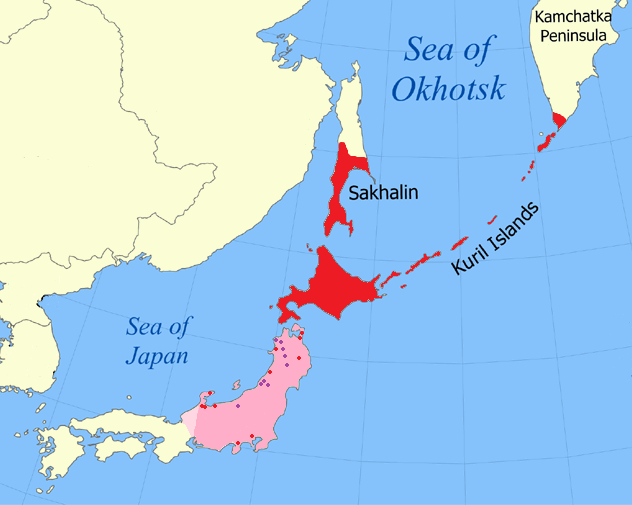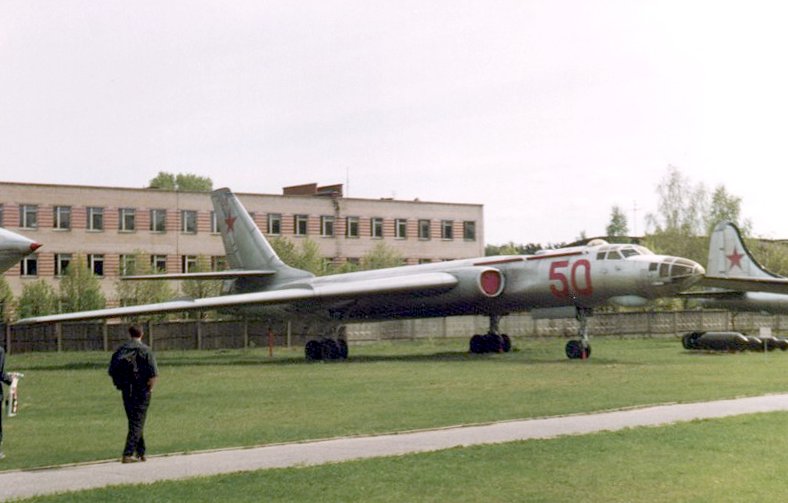|
Korsakov (air Base)
Korsakov (also Novaya (US)) was a Soviet Naval Aviation reserve airfield197803_VOL. 3 OF 4 VOLUMES ANNUAL INDEX TO PHOTOGRAPHIC EXPLOITATION PRODUCTS JANUARY-DECEMBER 1978, CREST: CIA-RDP79T01184A000100030001-6, Central Intelligence Agency, Washington, DC. on Sakhalin, Russia located northeast of Korsakov. It was first listed by US intelligence in 1964, when significant construction of the runway was underway. Due to the long runway length it was likely intended for dispersal of Tupolev Tu-16R medium reconnaissance jets, and may have been built to meet Defense Minister Rodion Malinovsky's directive that every American aircraft carrier between Midway Island and the Kuril Ridge be photographed by Soviet Tupolev Tu-16R reconnaissance aircraft. The airfield appears to have been abandoned after the Cold War The Cold War was a period of global Geopolitics, geopolitical rivalry between the United States (US) and the Soviet Union (USSR) and their respective allies, the capitali ... [...More Info...] [...Related Items...] OR: [Wikipedia] [Google] [Baidu] |
Soviet Naval Aviation
Soviet Naval Aviation (AV-MF, ) was the naval aviation arm of the Soviet Navy. Origins The first naval aviation units in Russia were formed in 1912–1914 as a part of the Baltic Fleet and the Black Sea Fleet. During World War I, the hydroplane units were used in the Black Sea for conducting aircraft reconnaissance, bombing and firing at coastal and port installations and enemy ships, and destroying submarines and enemy aircraft on the airfields. Civil War and Interwar Period The regular Soviet naval aviation units were created in 1918. They participated in the Russian Civil War, cooperating with the ships and the army during the combats at Petrograd, on the Baltic Sea, the Black Sea, the Volga, the Kama River, Northern Dvina and on the Lake Onega. The newborn Soviet Naval Air Force consisted of only 76 obsolete hydroplanes. Scanty and technically imperfect, it was mostly used for resupplying the ships and the army. In the second half of the 1920s, the Naval Aviation ... [...More Info...] [...Related Items...] OR: [Wikipedia] [Google] [Baidu] |
Sakhalin
Sakhalin ( rus, Сахали́н, p=səxɐˈlʲin) is an island in Northeast Asia. Its north coast lies off the southeastern coast of Khabarovsk Krai in Russia, while its southern tip lies north of the Japanese island of Hokkaido. An island of the West Pacific, Sakhalin divides the Sea of Okhotsk to its east from the Sea of Japan to its southwest. It is administered as part of Sakhalin Oblast and is the largest island of Russia, with an area of . The island has a population of roughly 500,000, the majority of whom are Russians. The indigenous peoples of the island are the Ainu, Oroks, and Nivkhs, who are now present in very small numbers. The island's name is derived from the Manchu word ''Sahaliyan'' (), which was the name of the Qing dynasty city of Aigun. The Ainu people of Sakhalin paid tribute to the Yuan, Ming, and Qing dynasties and accepted official appointments from them. Sometimes the relationship was forced but control from dynasties in China was loose ... [...More Info...] [...Related Items...] OR: [Wikipedia] [Google] [Baidu] |
Korsakov (town)
Korsakov (Russian: Корсаков; 町, ''Ōdomari-chou / Ōtomari-chou'') is a town and the administrative center of Korsakovsky District of Sakhalin Oblast, Russia. It is located south from Yuzhno-Sakhalinsk, at the southern end of Sakhalin Island, on the coast of the Salmon Cove in the Aniva Bay. The town has a population of 33,526 as of the 2010 census. History Little is known of the early history of Korsakov. The site was once home to an Ainu fishing village called Kushunkotan (in Russian sources, Tamari-Aniva), which was frequented by traders of the Matsumae clan from as early as 1790. On 22 September 1853, a Russian expedition, commanded by Gennady Nevelskoy, raised the Russian flag at the settlement and renamed it "Fort Muravyovsky", after Governor-General of Eastern Siberia Nikolay Muravyov.The Occupation of Southern Saghalin by the Russians in 1853–54'', Akizuki Toshiyuki, Hokkaidō University. Nevelskoy left detailed recollections of the landing. He encount ... [...More Info...] [...Related Items...] OR: [Wikipedia] [Google] [Baidu] |
Tupolev Tu-16
The Tupolev Tu-16 (USAF/DOD reporting name Type 39; NATO reporting name: Badger) is a twin-engined jet strategic heavy bomber used by the Soviet Union. It has been flown for almost 70 years. While many aircraft in Soviet service were retired after the Cold War ended, the Chinese license-built version Xian H-6 remains in service with the People's Liberation Army Air Force, with the most modern variant, the H-6K, still being actively produced . Development In the late 1940s, the Soviet Union was strongly committed to matching the United States in strategic bombing capability. The Soviets' only long-range bomber at the time was Tupolev's Tu-4 "Bull", a reverse-engineered copy of the American B-29 Superfortress. The development of the notably powerful Mikulin AM-3 turbojet led to the possibility of a large, jet-powered bomber. The Tupolev design bureau began work on the Tu-88 ("Aircraft N") prototypes in 1950. The Tu-88 first flew on 27 April 1952. After winning a competition ... [...More Info...] [...Related Items...] OR: [Wikipedia] [Google] [Baidu] |
Rodion Malinovsky
Rodion Yakovlevich Malinovsky (; ; – 31 March 1967) was a Soviet military commander and Marshal of the Soviet Union. He served as Minister of Defence of the Soviet Union from 1957 to 1967, during which he oversaw the strengthening of the Soviet Army. Born to an impoverished Ukrainian household in Odessa, Malinovsky volunteered for the Imperial Russian Army during the World War I, First World War and served with distinction in both the Eastern Front (World War I), German Front and the Western Front (World War I), Western Front. He was serving in the Russian Legion in France on the outbreak of the October Revolution, after which he returned to Russia and joined the Red Army in the Russian Civil War. After graduating from the Frunze Military Academy, Malinovsky volunteered to fight on the Second Spanish Republic, Republican side during the Spanish Civil War, where he again served with great distinction and was later awarded the Order of Lenin and the Order of the Red Banner in r ... [...More Info...] [...Related Items...] OR: [Wikipedia] [Google] [Baidu] |
Nikolai Amelko
Nikolai Nikolayevich Amelko (; 22 November 1914 – 27 June 2007) was an officer of the Soviet Navy. He served during the Winter War and the Second World War and reached the rank of admiral. Born in 1914, Amelko grew up in the early years of the Soviet Union. Deciding on a naval career at an early age from time spent around naval units in the port city of Leningrad and its environs, he studied at the Saint Petersburg Naval Institute, M. V. Frunze Higher Naval School and was commissioned an officer on graduation. His career nearly ended in disaster when he was accused of crimes during the Great Purge, but was acquitted. He went on to serve on a training ship of the Baltic Fleet, seeing service during the Winter War, and then during the siege of Leningrad during the Second World War. He had command of a detachment of minesweepers which had been converted to lay smoke screens, seeing action in the Gulf of Finland throughout the war. Decorated and promoted for his service, he was appo ... [...More Info...] [...Related Items...] OR: [Wikipedia] [Google] [Baidu] |
Cold War
The Cold War was a period of global Geopolitics, geopolitical rivalry between the United States (US) and the Soviet Union (USSR) and their respective allies, the capitalist Western Bloc and communist Eastern Bloc, which lasted from 1947 until the dissolution of the Soviet Union in 1991. The term ''Cold war (term), cold war'' is used because there was no direct fighting between the two superpowers, though each supported opposing sides in regional conflicts known as proxy wars. In addition to the struggle for ideological and economic influence and an arms race in both conventional and Nuclear arms race, nuclear weapons, the Cold War was expressed through technological rivalries such as the Space Race, espionage, propaganda campaigns, Economic sanctions, embargoes, and sports diplomacy. After the end of World War II in 1945, during which the US and USSR had been allies, the USSR installed satellite state, satellite governments in its occupied territories in Eastern Europe and N ... [...More Info...] [...Related Items...] OR: [Wikipedia] [Google] [Baidu] |



